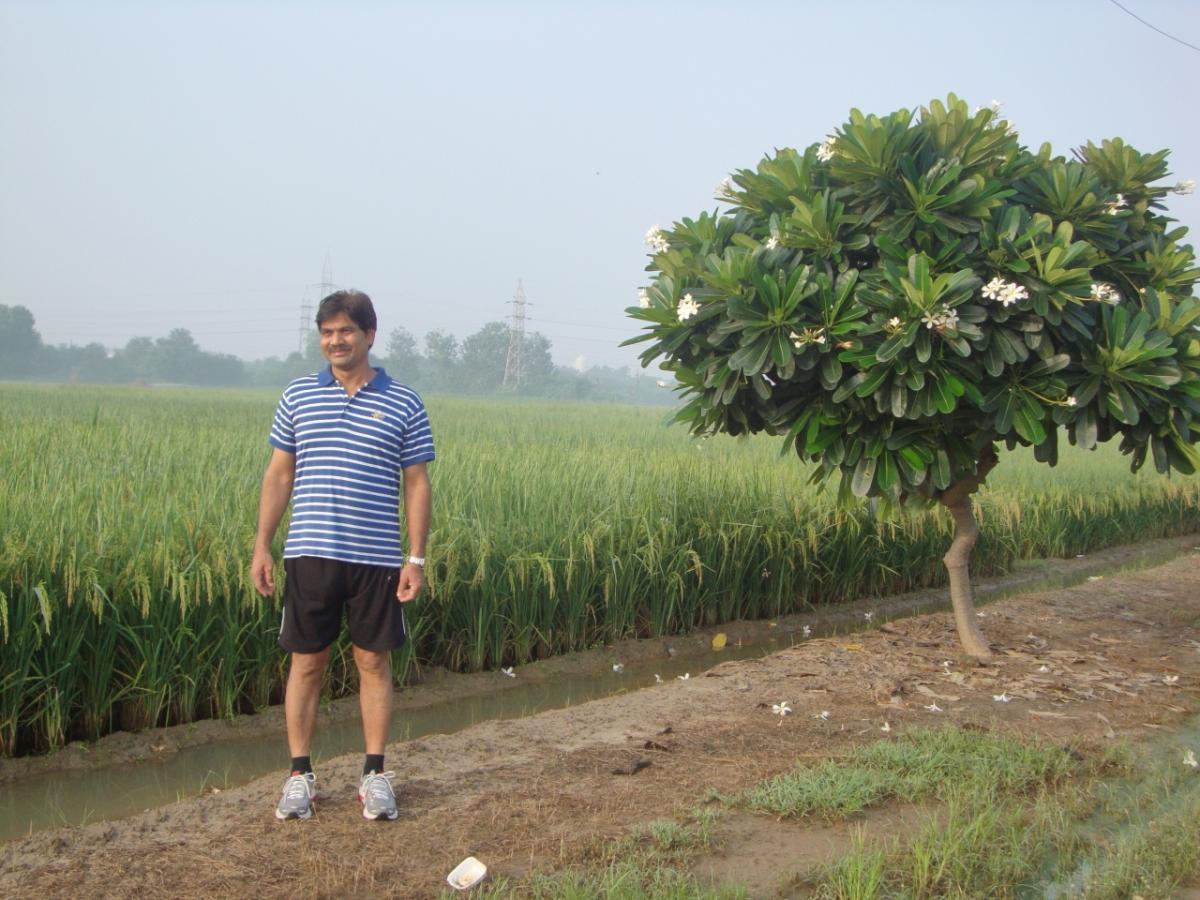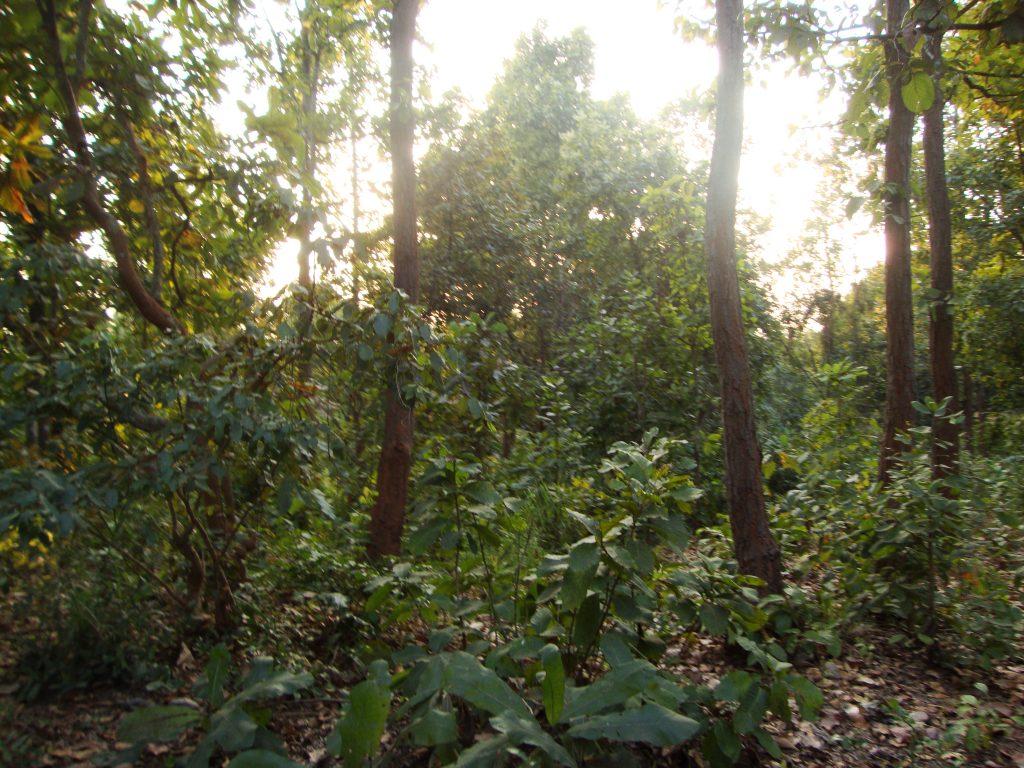“We Started As a Hungry Nation” but Trees on Farms Are Now Key
As published on the Agroforestry World blog
by Cathy Watson
You became an Indian Administrative Service Officer in 1985. You’re a witness to the heady days of the Green Revolution!
Yes, I landed in Punjab in 1986. By that time, consolidation of land had taken place. You could drive miles and miles and there were hardly any trees, just cropland – wheat, , maize, cotton or sunflower- that’s all. The landscape was so uniform that after a couple of weeks one would be fed up of travelling; yet as a civil servant I had to! In contrast, back in my home in Orissa, now called Odisha, consolidation had not taken place. There were fields with boundaries with lots of trees. I was fond of that landscape, but when I landed in Punjab, it was a different story.
Punjab had gone from one farmer having multiple small fields to a farmer having one big field?
Yes! When we talk about the success of the Green Revolution in Punjab, one of the factors cited is consolidation of land holdings. On the positive side, it helped the farmers to invest in land development. But land development also destroyed the natural vegetation surrounding agricultural fields. The aim was to develop reasonably sized big fields for operational efficiency through farm mechanization. That is the reason they put the boundaries in straight lines. If the trees fell inside the boundary, the farmers said “why should I have a tree there? I’ll cut the tree and have a huge chunk of land for maize or wheat”. That’s how consolidation had the unintended consequence of destroying trees surrounding agricultural fields. However, over the years, agro-forestry in the form of commercial monoculture (eucalyptus or poplar plantations) has picked up in Punjab.
So, in effect, the Green Revolution discouraged trees?
Trees on the boundary create shade and restrict sunlight, affecting healthy growth of crops. As the farmers are interested in enhancing crop yield per unit area, they have a tendency to cut the trees. But it was not the Green Revolution as such, it was the economic imperative.
Could we say it was a side effect?
Yes, but if we had ensured protection of the trees, they could have survived. We could have said – maintain your farmland boundary as it is. Have a mixed cropping system having agroforestry components. Or we could have even incentivized farmers, like nowadays in Europe and America where farmers are given payments to protect their landscape.
A small cash transfer. Might India consider that?
Yes, such concepts are seeping into the policymakers though it might take years. We started as a hungry nation. Our focus was to grow more food to feed several hundred million and now over one billion people. But now we are self-sufficient in food production. We don’t depend on imports anymore except oil seeds and pulses to some extent. We’re exporting significant quantity food grains and other agricultural products. So now the focus is shifting from enhancing production and productivity to producing quality food in order to ensure food and nutritional security and community welfare, while also maintaining environmental harmony. We are moving in the right direction.
Can the National Agroforestry Policy help get more trees on farms?
It can encourage. The institutional factor of people being prevented from selling their trees easily has been relaxed in many states. So, people will think – “OK, it is not a big problem to grow and sell trees” . But we also need to have an outreach program targeted to the important stakeholders. Farmers need to know that they can get a better return from agroforestry than by just growing annual crops. The economic and social return calculations have not yet been internalized by the farmers. But if we can reach out to them and motivate them, with an incentive structure, it can work. An incentive could be a financial institution, saying – “OK I’ll take the returns from the sale of your 1000 trees after 7 years, and every year I’ll give you an agreed amount of money.” This kind of model could work, and, perhaps the small and marginal farmers can earn something each year from that field of trees.
Falling groundwater and other biotic and abiotic stresses are resulting in inconsistent returns to the farmers. But could agroforestry help here?
Yes, agroforestry can help. It can be a multi-pronged approach. Agroforestry systems withstand drought better than systems of annual crops alone. A lot of crop failure takes place because of drought. Farmers invest money and capital in modern agriculture. When the crop fails, it’s devastating because they don’t have wealth to fall back on. However, the recent program of crop Insurance can mitigate the risks of crop failure.
Have you looked at enhancing farmers’ incomes from an ecological point of view?
Yes, ICAR has an All India Coordinated Research Program on integrated farming systems, which includes agroforestry as one component.. We have successfully experimented with many models involving crops, trees, fisheries and livestock. These combinations work well in the field and enable a sustainable livelihood security to the farmers.
You mention livestock. Some Indian conservationists say free roaming cattle put immense pressure on forests. Parts of Africa have shifted to cutting and carrying fodder to livestock that are confined to home. Could that work?
It is partly workable but not entirely. Scientifically, it is not exactly the grazing by cattle in India that destroys the ecology. It is not entirely because of a lot of cattle grazing that there is deforestation or lack of regeneration. And confining cattle to one place is not possible because the farmers who own them cannot afford that kind of management system. It is a concept we understand. But when you put yourself in the shoes of those people, it is not workable.
Because they have very small land holdings?
That and other issues. Female cows are very useful because they produce milk and reproduce. But bulls, what will they do? They are left in the open and even abandoned when a poor man cannot afford to feed them. The Government has several approaches to this. We are encouraging the use of dung and urine, and the bulls as draught animals, although that is going down in scale because of mechanization. Scientifically, we’re also trying to solve the problem through a concept called semen sexing.
Which leads to fewer males?
Yes, you get females more. It is a technology developed in the USA, but we are developing our own, so it may be cost-effective.
Amazing. I’m glad I asked. I had not thought about the fate of male animals. Now, to wrap up, agroforestry is no longer like an orphan? It’s now central to the thinking of ICAR?
It is a new thing, definitely – a new focus. There are also communities in India which love to protect trees. Organizations are coming up in rural and urban areas. People are trying to plant more trees and protect them. Today if a municipality tries to cut down one tree, you’ll find it tomorrow in the newspapers and there will be ten people protesting. In my native place, the villagers decided to take over the management of local forest themselves. They contribute their labor free of cost, and every day two persons go and protect the forest. Unauthorized entry of villagers from outside is not allowed. But in a year, they can take certain basic requirements from the forest for themselves. Such traditional management practices enable greater tree density and protection of forests.
And the biodiversity came back?
Yes, there was significant improvement in biodiversity. The bears, deer, elephants and other wildlife that had retreated inland came back. The denuded hills were back with trees and the forests regrew.
Since 2004, ICAR’s generous support has enabled the World Agroforestry Centre to leverage the power of trees to help meet the Government of India’s national agricultural agenda. In addition to annual financial support (beginning in 2012), ICAR hosts ICRAF South Asia in India and provides access to valuable research and farm facilities at its more than 100 institutions. Addition information about ICRAF’s work in India, which includes significant contributions to the development of the National Agroforestry Policy, a global first, the Sub-Mission on Agroforestry, and efforts to enhance adoption of agroforestry by small holders in Odisha, through the following links.




